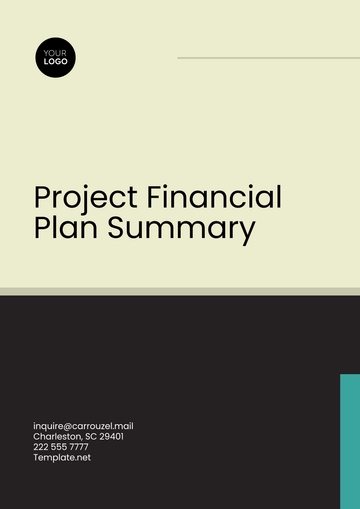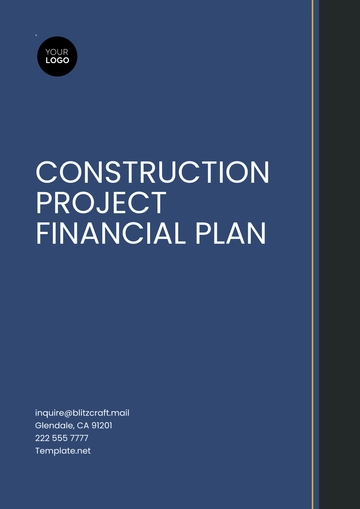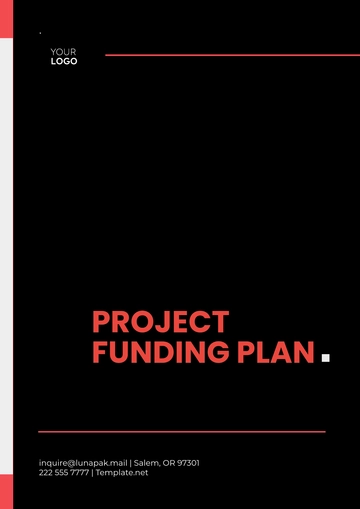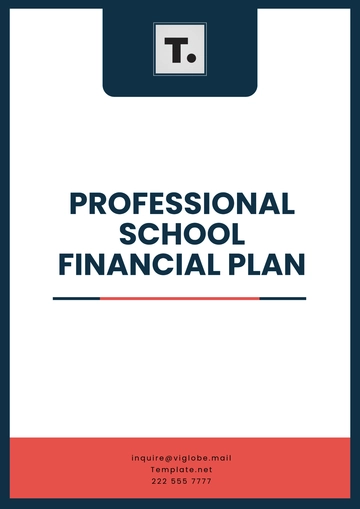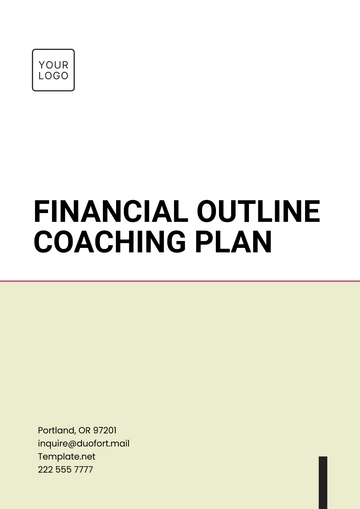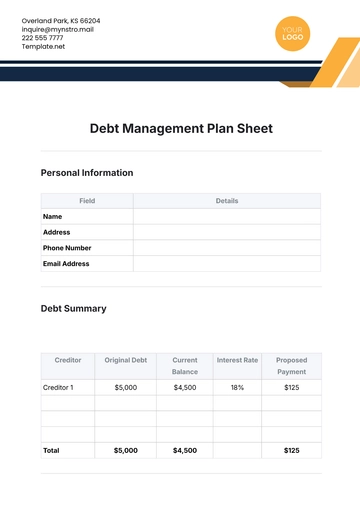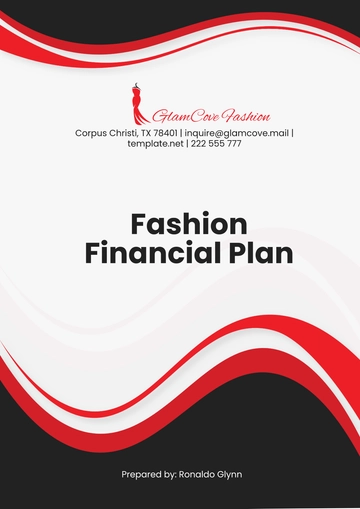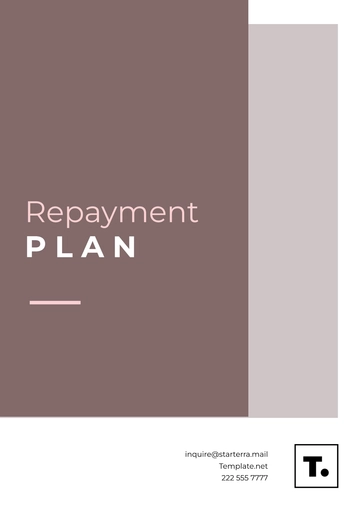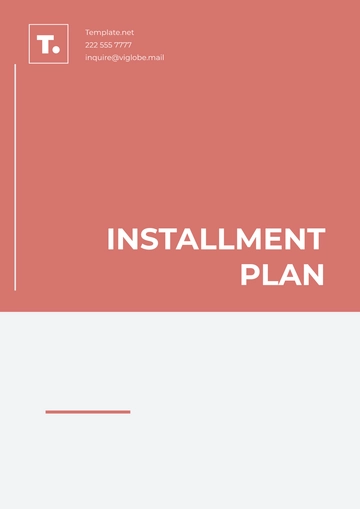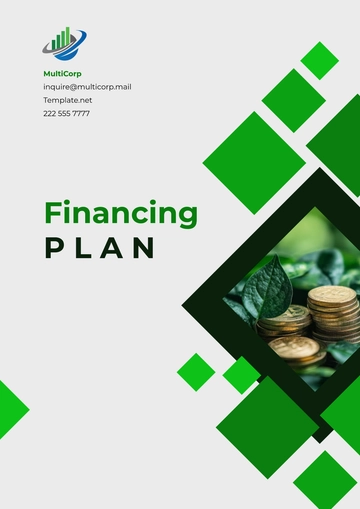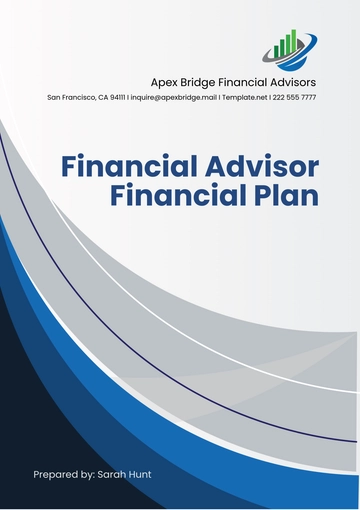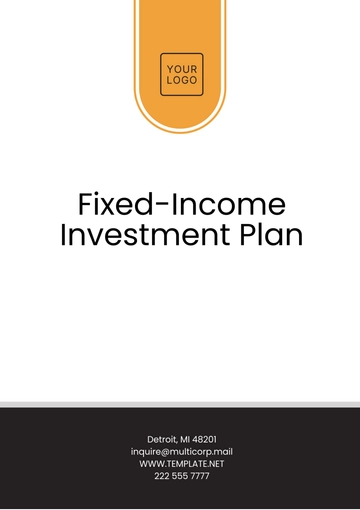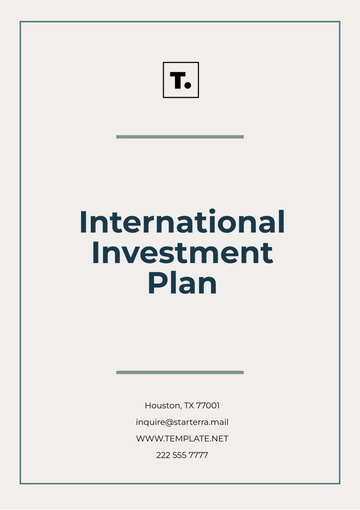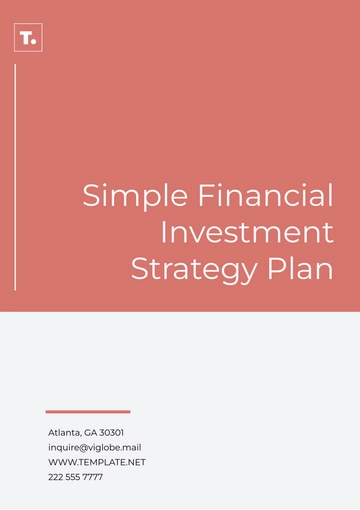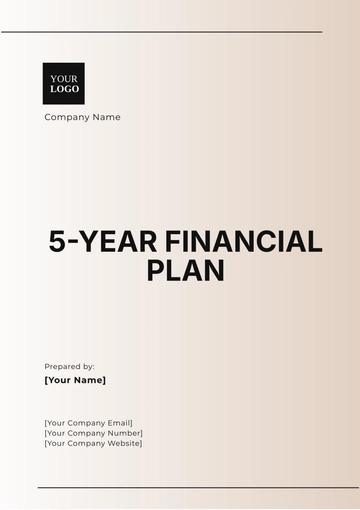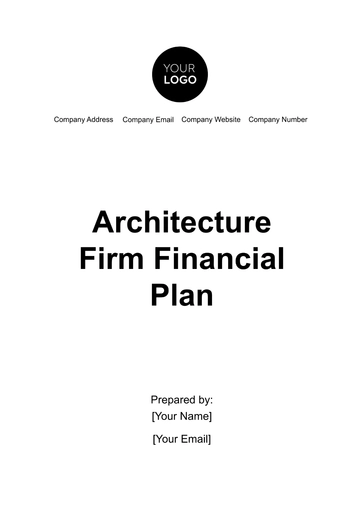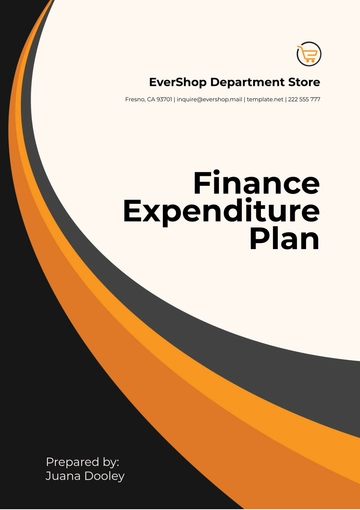Free Hotel Financial Plan
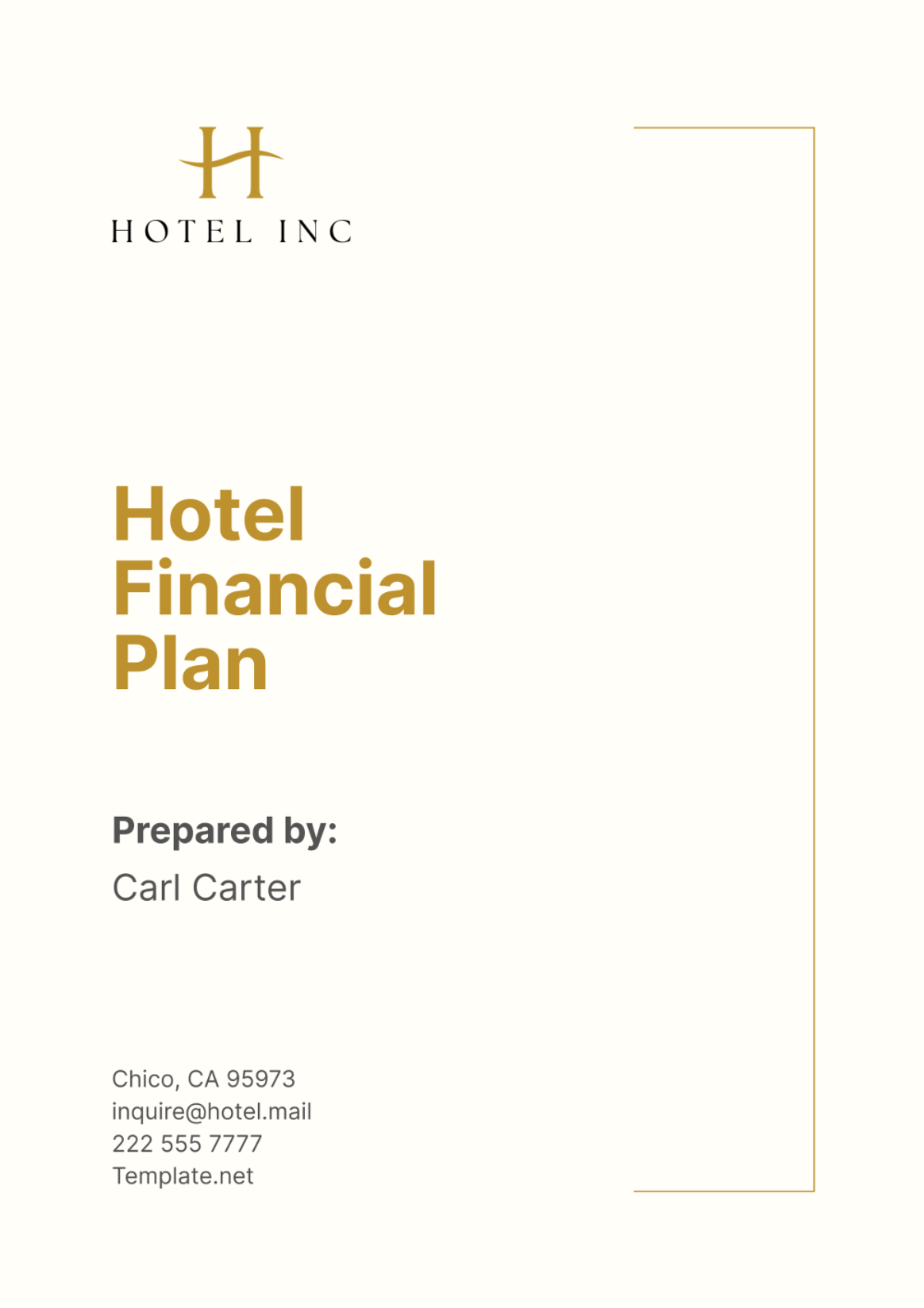
I. Executive Summary
This Hotel Financial Plan serves as a strategic blueprint for [Your Company Name], detailing our approach to achieving financial robustness and market leadership. By integrating industry insights and predictive analytics, we aim to set realistic revenue projections that align with consumer behavior and market dynamics. Our plan prioritizes efficiency in resource allocation and operational expenditures, ensuring that every dollar spent contributes directly to our overarching goal of maximizing profitability and shareholder value.
Central to our financial strategy is a meticulous cost management system that scrutinizes all expenditures, from daily operational costs to larger, strategic investments. We plan to optimize our staffing model and streamline supply chain processes to reduce overheads, while investing in marketing strategies that effectively target our key demographics. Furthermore, our plan includes a comprehensive review of utility management and technology upgrades to enhance operational efficiency and guest experience, driving both cost savings and revenue growth.
Recognizing the volatile nature of the hospitality industry, our financial plan incorporates robust risk assessment and mitigation strategies. We will establish a contingency fund to safeguard against unforeseen events and economic downturns, ensuring business continuity. Capital investment decisions will be guided by detailed ROI analyses and market research, focusing on enhancing property assets and expanding our service offerings to capitalize on emerging market opportunities. This forward-looking financial strategy is designed to foster sustainable growth and build resilience in our business model at [Your Company Name].
Our objectives for the Hotel Financial Plan at [Your Company Name] are meticulously crafted to ensure a robust and sustainable financial strategy:
Establishing Revenue Projections: We aim to develop accurate revenue forecasts by analyzing current market trends, seasonal variations, and historical financial data. Our approach includes evaluating competitive pricing strategies, occupancy rates, and revenue streams from ancillary services such as dining, spa facilities, and event hosting. This comprehensive analysis will enable us to set realistic and attainable revenue goals that align with market dynamics and business potential.
Detailing Operational Expenses: Our financial plan outlines a detailed analysis of operational costs, focusing on key areas such as staffing, maintenance, marketing, and utilities. By evaluating historical spending patterns and benchmarking against industry standards, we will identify cost-saving opportunities and budget efficiently. Strategic staffing solutions will be explored to optimize labor costs, while proactive maintenance schedules and energy-efficient practices will be implemented to manage ongoing operational expenses effectively.
Outlining Capital Investment Requirements: We will specify the necessary capital investments required to enhance our property and services. This includes funding for property renovations, technology upgrades for improved guest experience and operational efficiency, and expansions to increase capacity or develop new revenue channels. Each investment will be critically assessed for its potential return, aligning with our strategic goals to enhance guest satisfaction and drive profitability.
Developing a Robust Risk Management Strategy: To mitigate financial exposure and ensure operational continuity, our plan incorporates a comprehensive risk management framework. This strategy includes identifying potential risks from market fluctuations, regulatory changes, and operational disruptions. We will establish preventive measures and contingency plans to manage these risks effectively, ensuring minimal impact on our financial health and business operations.
Setting Financial Targets and Performance Indicators: Our financial plan sets clear, measurable targets and performance indicators to track quarterly and annual growth. These metrics include revenue growth rates, profit margins, cost management efficiency, and return on investment (ROI) for capital projects. Regular performance reviews will be conducted to assess progress against these targets, enabling timely adjustments to our strategy to maximize financial performance and stakeholder value.
Through these detailed and strategic objectives, [Your Company Name] aims to strengthen its financial foundation, enhance operational effectiveness, and achieve sustained growth and profitability.
II. Company Overview
[Your Company Name] stands as a prominent figure in the hospitality sector, with a rich heritage of providing exceptional customer service and luxurious accommodations. We cater to a diverse clientele, including leisure travelers seeking relaxation and luxury, as well as business travelers in need of convenient and top-tier amenities. Our facilities are strategically located to offer guests access to major tourist attractions and business hubs, enhancing their overall experience and satisfaction.
Our reputation for excellence is built on a foundation of consistently delivering high-quality services and maintaining state-of-the-art facilities. Each of our properties is designed to offer a unique blend of comfort and sophistication, with amenities such as gourmet restaurants, full-service spas, and advanced business centers. This commitment to quality not only elevates guest experiences but also positions [Your Company Name] as a leader in redefining hospitality standards.
Looking forward, [Your Company Name] is dedicated to sustaining growth and innovation in the hospitality industry. We are committed to environmental sustainability and implementing smart technology solutions that improve operational efficiency and guest interaction. Our ongoing investments in staff training and development ensure that our team is equipped to meet the evolving needs of our guests, thereby reinforcing our brand's promise of exceptional service and memorable stays. Through these efforts, [Your Company Name] continues to enhance its competitive edge and uphold its legacy as a beacon of hospitality excellence.
III. Revenue Projections
In this section, we present the anticipated revenue growth for [Your Company Name], extending into the future. As we look towards 2050 and beyond, our projections reflect strategic expansions, enhancements in service offerings, and a robust marketing approach aimed at increasing occupancy rates and average daily rates. These projections are not just numbers; they represent our commitment to innovation and excellence in the hospitality industry.
Year | Projected Revenue | Year-over-Year Growth |
|---|---|---|
2050 | $12,000 | N/A |
2051 | $12,600 | 5% |
2052 | $13,230 | 5% |
2053 | $13,892 | 5% |
2054 | $14,586 | 5% |
The revenue figures from 2050 onwards are projected based on a combination of historical growth rates, planned capacity increases, enhancements in luxury offerings, and expansions into new markets. The annual growth rate is conservatively estimated at 5%, considering both the expanding global travel market and our strategic initiatives to attract a broader customer base. This table underscores our proactive approach to capturing market trends and driving sustainable growth.
IV. Cost Analysis
In this critical section, we meticulously outline the estimated operating expenses for [Your Company Name] as we advance towards 2050 and beyond. This detailed breakdown ensures transparency and supports our strategic financial planning. These estimates reflect our ongoing commitment to efficient resource management, optimizing operational costs while maintaining the high standards of luxury and service our guests expect.
Expense Category | Annual Estimate (in thousands) | Percentage of Total Expenses |
|---|---|---|
Staffing | $1,200 | 60% |
Maintenance | $300 | 15% |
Marketing | $200 | 10% |
Utilities | $150 | 7.5% |
Miscellaneous | $150 | 7.5% |
Total | $2,000 | 100% |
The table presents a comprehensive view of our anticipated costs for the fiscal year 2050. Staffing remains our largest expenditure, reflecting our dedication to exceptional guest service through a well-trained and sufficient workforce. Maintenance, marketing, and utilities are managed efficiently to optimize spending and contribute to our sustainability objectives. This strategic allocation of resources ensures that [Your Company Name] continues to operate smoothly while paving the way for future growth and innovation.
V. Capital Investment Requirements
As [Your Company Name] strides into the future, our strategic capital investment plan for 2050 and beyond is pivotal in driving our growth and enhancing our competitive edge in the hospitality industry. This section outlines significant investments aimed at upgrading our properties, incorporating cutting-edge technology, and executing ambitious expansion projects. These initiatives are carefully chosen to meet evolving market demands and enhance guest experiences, securing our position as a leader in luxury hospitality.
Investment Category | Amount (in thousands) | Purpose and Impact |
|---|---|---|
Property Enhancements | $500 | To renovate and refurbish existing facilities, enhancing aesthetic appeal and guest comfort. |
Technology Upgrades | $200 | To integrate advanced technological solutions that improve operational efficiency and guest interaction. |
Expansion Projects | $800 | To develop new properties and expand into emerging markets, increasing our global footprint. |
These investments reflect our commitment to excellence and innovation. The property enhancements will ensure that all locations maintain the high standards our guests expect. Technology upgrades will focus on enhancing guest service and operational efficiency through innovative systems and software. Lastly, our expansion projects are designed to strategically position [Your Company Name] in lucrative markets, fostering growth and ensuring long-term profitability.
VI. Risk Management Strategy
At [Your Company Name], as we navigate towards the future, our risk management strategy is designed to safeguard our financial stability and ensure continuous operations. This section outlines our systematic approach to mitigating potential financial risks that could impact our business in 2050 and beyond. Each strategy is crafted to address specific vulnerabilities, ensuring resilience and security in our financial operations.
Risk Management Strategy | Description | Expected Impact |
|---|---|---|
Diversifying Revenue Streams | Expanding into new markets and enhancing service offerings to reduce reliance on traditional revenue sources. | Minimizes financial impact from market fluctuations and increases revenue stability. |
Implementing Strict Cost Controls | Establishing stringent budgetary guidelines and conducting regular financial reviews to prevent overspending. | Ensures financial efficiency and controls operational costs. |
Maintaining a Reserve Fund | Allocating funds specifically for unexpected events and emergencies to provide a financial cushion. | Enhances financial security and enables rapid response to unforeseen challenges. |
Purchasing Comprehensive Insurance Coverage | Securing insurance for property, liability, and business interruption to protect against significant financial losses. | Provides coverage against substantial unforeseen losses and supports business continuity. |
These strategies are integral to our proactive financial management approach. By diversifying our revenue streams, we enhance our ability to withstand economic downturns. Strict cost controls and regular audits ensure operational efficiency and fiscal discipline. A robust reserve fund and comprehensive insurance coverage act as safeguards, protecting our business from unpredictable financial challenges. Through these measures, [Your Company Name] aims to maintain a strong and secure financial foundation as we move forward.
VII. Financial Targets and Performance Indicators
As [Your Company Name] continues to evolve and expand, we have established specific financial targets and performance indicators critical for monitoring our progress and success. These metrics for 2050 and beyond are designed to guide our strategic decisions, ensuring that we meet our growth objectives while maintaining operational excellence and high guest satisfaction. This systematic approach aids in achieving sustainable growth and operational efficiencies.
Financial Targets | Performance Indicators | Description and Strategic Importance |
|---|---|---|
Achieve a 10% increase in annual revenue | Year-over-Year Revenue Growth | Measures the effectiveness of our marketing and operational strategies to drive revenue. |
Maintain operational costs at or below 60% of total revenue | Cost-to-Revenue Ratio | Ensures efficiency in operations, optimizing expenditure to maximize profitability. |
Achieve a guest satisfaction rating of 90% or higher | Guest Satisfaction Index | Gauges the quality of guest experience, crucial for maintaining high standards and repeat business. |
Expand to at least two additional locations within five years | Number of New Properties Opened | Tracks our expansion progress, aligning with our long-term strategic goal to increase market presence. |
These targets and indicators are foundational to our financial strategy, offering clear benchmarks for performance evaluation. Aiming for a 10% increase in annual revenue reflects our ambition to grow sustainably through innovative offerings and market expansion. Maintaining operational costs below 60% of total revenue emphasizes our commitment to efficiency and fiscal prudence. A high guest satisfaction rating demonstrates our focus on delivering exceptional service, which directly impacts repeat patronage and reputation. Lastly, expanding our geographic footprint is pivotal to accessing new markets and diversifying our revenue streams, securing our position as a leader in the hospitality industry.
- 100% Customizable, free editor
- Access 1 Million+ Templates, photo’s & graphics
- Download or share as a template
- Click and replace photos, graphics, text, backgrounds
- Resize, crop, AI write & more
- Access advanced editor
Unlock your path to financial clarity with Template.net's Hotel Financial Plan Template. This fully editable and customizable template ensures your financial strategy is on point. Crafted for the marketing industry and professionals, our template is editable in our AI Editor Tool, making your planning seamless. Streamline your hotel's finances with precision and ease today.
You may also like
- Finance Plan
- Construction Plan
- Sales Plan
- Development Plan
- Career Plan
- Budget Plan
- HR Plan
- Education Plan
- Transition Plan
- Work Plan
- Training Plan
- Communication Plan
- Operation Plan
- Health And Safety Plan
- Strategy Plan
- Professional Development Plan
- Advertising Plan
- Risk Management Plan
- Restaurant Plan
- School Plan
- Nursing Home Patient Care Plan
- Nursing Care Plan
- Plan Event
- Startup Plan
- Social Media Plan
- Staffing Plan
- Annual Plan
- Content Plan
- Payment Plan
- Implementation Plan
- Hotel Plan
- Workout Plan
- Accounting Plan
- Campaign Plan
- Essay Plan
- 30 60 90 Day Plan
- Research Plan
- Recruitment Plan
- 90 Day Plan
- Quarterly Plan
- Emergency Plan
- 5 Year Plan
- Gym Plan
- Personal Plan
- IT and Software Plan
- Treatment Plan
- Real Estate Plan
- Law Firm Plan
- Healthcare Plan
- Improvement Plan
- Media Plan
- 5 Year Business Plan
- Learning Plan
- Marketing Campaign Plan
- Travel Agency Plan
- Cleaning Services Plan
- Interior Design Plan
- Performance Plan
- PR Plan
- Birth Plan
- Life Plan
- SEO Plan
- Disaster Recovery Plan
- Continuity Plan
- Launch Plan
- Legal Plan
- Behavior Plan
- Performance Improvement Plan
- Salon Plan
- Security Plan
- Security Management Plan
- Employee Development Plan
- Quality Plan
- Service Improvement Plan
- Growth Plan
- Incident Response Plan
- Basketball Plan
- Emergency Action Plan
- Product Launch Plan
- Spa Plan
- Employee Training Plan
- Data Analysis Plan
- Employee Action Plan
- Territory Plan
- Audit Plan
- Classroom Plan
- Activity Plan
- Parenting Plan
- Care Plan
- Project Execution Plan
- Exercise Plan
- Internship Plan
- Software Development Plan
- Continuous Improvement Plan
- Leave Plan
- 90 Day Sales Plan
- Advertising Agency Plan
- Employee Transition Plan
- Smart Action Plan
- Workplace Safety Plan
- Behavior Change Plan
- Contingency Plan
- Continuity of Operations Plan
- Health Plan
- Quality Control Plan
- Self Plan
- Sports Development Plan
- Change Management Plan
- Ecommerce Plan
- Personal Financial Plan
- Process Improvement Plan
- 30-60-90 Day Sales Plan
- Crisis Management Plan
- Engagement Plan
- Execution Plan
- Pandemic Plan
- Quality Assurance Plan
- Service Continuity Plan
- Agile Project Plan
- Fundraising Plan
- Job Transition Plan
- Asset Maintenance Plan
- Maintenance Plan
- Software Test Plan
- Staff Training and Development Plan
- 3 Year Plan
- Brand Activation Plan
- Release Plan
- Resource Plan
- Risk Mitigation Plan
- Teacher Plan
- 30 60 90 Day Plan for New Manager
- Food Safety Plan
- Food Truck Plan
- Hiring Plan
- Quality Management Plan
- Wellness Plan
- Behavior Intervention Plan
- Bonus Plan
- Investment Plan
- Maternity Leave Plan
- Pandemic Response Plan
- Succession Planning
- Coaching Plan
- Configuration Management Plan
- Remote Work Plan
- Self Care Plan
- Teaching Plan
- 100-Day Plan
- HACCP Plan
- Student Plan
- Sustainability Plan
- 30 60 90 Day Plan for Interview
- Access Plan
- Site Specific Safety Plan

